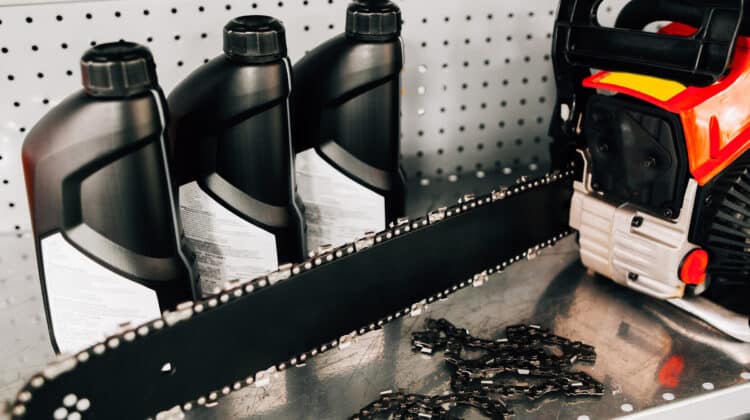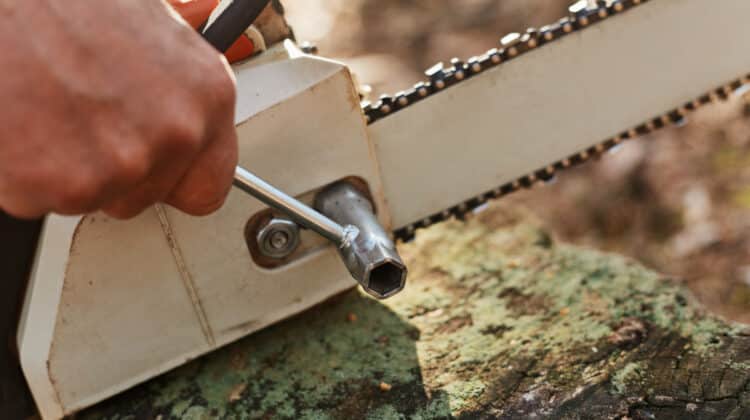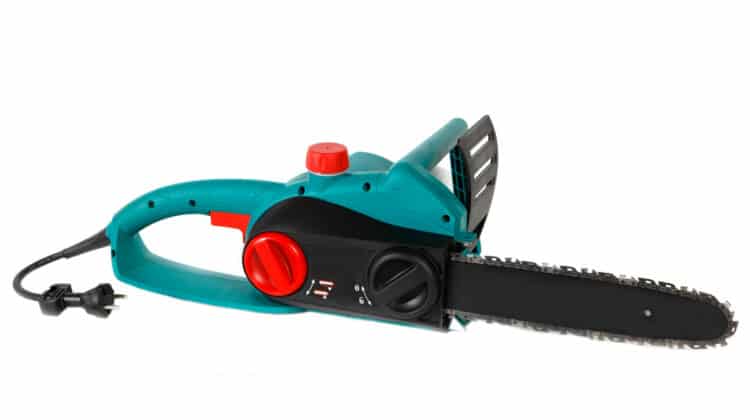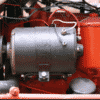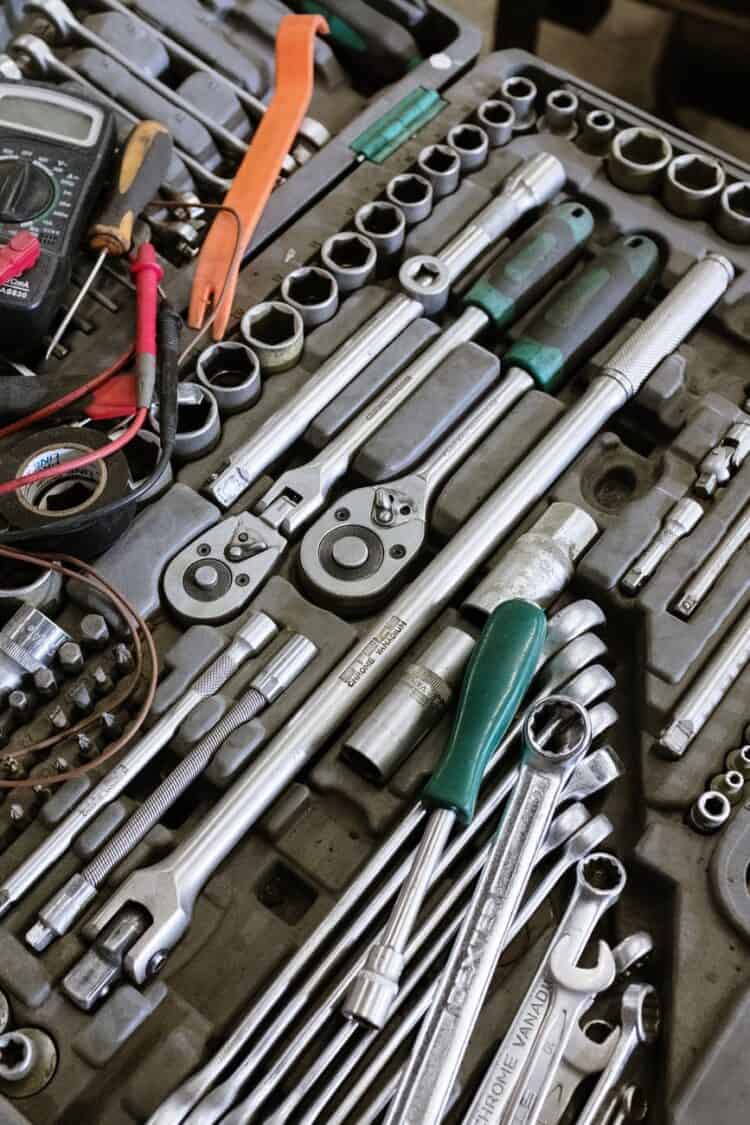
It is essential to properly store your chainsaw to keep it in peak operating condition. The good news? Learning how to store a chainsaw right isn’t very hard.
Ensure your chainsaw is stored securely regardless of whether your purchase is $50 or $1,000 or more. As a result, it is a good idea to learn how to properly store a chainsaw first. You should review these guidelines regularly, even if you think you know what you’re doing.
It can distinguish between a chainsaw that lasts 30 years and one that only lasts 30 minutes if it is stored properly. Given the high price of some of these chainsaws, you will want them to survive at least 30 years!
Table of Contents
How To Guide: Storing A Chainsaw
When it comes to securing a chainsaw, you have the option of becoming creative. If you want to take your chainsaws more seriously, it is worthwhile to go through this process. Putting together a brief, fundamental primer is equally vital. Because not everyone has the luxury of taking the time to sit and read thousands of words.
Chainsaws may be kept in a variety of locations for both long and short periods. To be displayed correctly, they do not need to be standing on end with their bar pointing to the ground, nor do they need to be flat on a shelf.
They can be saved in the following ways:
- As in the case of the shops, at an angle
- Because most of my belongings are currently stored in the garage, I’m sitting on the ground.
- Upright, which can be a considerably more efficient use of available space.
Well-Ventilated Storage Area
The very first thing you’ll want to do is make sure you’re in an area that’s incredibly well ventilated. Because the first thing you’ll be doing is draining the carburetor, this is an excellent place to start. This is necessary because it has the potential to cause the carburetor diaphragms to cling together.
After that, you’ll need to empty the chainsaw’s gasoline tank, which is why you’ll want to be in a well-ventilated location. After that, you’ll want to clean it.
Some people choose to use a gasoline stabilizer in place of a stabilizer. This is intended to keep the fuel from producing any harmful substances.
If you decide to go with this option, make sure to run the chainsaw for a total of three minutes. After adding the stabilizer, it is essential to distribute it throughout the gasoline system.
Removing Chain & Guide Bar
After you’ve entirely depleted your chainsaw’s fuel supply, you’ll want to begin removing the chain and then the guide bar. After you’ve finished with that, you’ll want to thoroughly clean the drive gears, chain, and bar on your machine.
You’ll want to get rid of any filth, dust, dirt, or wood chips that have accumulated.
If you’ve been thinking about replacing your chain or sharpening your blade, now is an excellent time to do it.
Storing Chain
Some individuals choose to keep their chainsaws without the bar and chain attached, which is quite OK. You are welcome to do so if you prefer, but you will first apply some protective lubricant.
You’ll want to put everything back together, including the chain, at this point. Make sure the chain is adjusted such that it snaps back into place when you pull it slightly away from the wall. You should lubricate the bar and chain with a protective oil once you have reinstalled them.
Manual Guide
The next step is to obtain your owner’s handbook, which will provide you with information on properly cleaning your air breather. Since then, procedures might vary based on the firm. It is recommended to consult your handbook in this case. Most of them may be simply cleaned with soapy water and then blown dry. Such as making use of compressed air.
Removing Or Replacing Spark Plugs (if necessary)
For a newbie, this might be the most intimidating and challenging stage to complete. This entails removing the spark plugs and, if necessary, replacing them with new ones.
Following their removal, you should inject about 1 teaspoon of 2 cycle engine oil into the spark plug’s aperture to prevent it from burning.
If you need to change it, you should go to your reliable user handbook for assistance. Then you can figure out what kind of spark plugs you need for your chainsaw.
Now is an excellent opportunity to check the condition of your spark plugs. Because there might be a variety of warning indicators that can assist in preventing future problems. It is essential to search for sooty electrodes since this might indicate that the combustion is not complete. This might say that your fuel mixture is incorrect.
Air Filter Cleaning
You will then want to clean or replace your air filter, depending on whether it is necessary. Cleaning an air filter appears to be a challenging task for many individuals. I’ll go through everything in more detail below to make things a little simpler for those that require it.
Here are some detailed tips on how you can clean the air filter on chainsaws:
Get To The Air Filter
Every chainsaw style is a little bit different from the next. The air filter is often located behind the engine and at the top of the vehicle. A decent rule of thumb is to check for a raised circular region on the body of the slightly elevated chainsaw.
Additionally, slits will be cut into the surface of this space to allow for optimum air circulation throughout its operation.
Remove the screws from the lid using the screwdriver and place them to the side while you work. Remove the chainsaw’s cover with care and set it to the side for now.
Remove Air Filter
There will almost certainly be another cover underneath this first one, closer to the rear of the engine. This is the cover for the air filter. You may have to remove even more screws.
Pull the air filter cover and set it aside until you are ready to replace it. It should only be necessary to pull the air filter off of its mounting bracket.
Clean Air Filter
One of the buckets should be filled with soap and hot water. Check to see if the water is sudsy. Take the air filter and carefully tap it on a hard surface to remove any excess moisture.
Instead of tapping the filter itself, tap the rough plastic edge. Dust will be loosened, and particles will fall off the filter as a result of this. When you’re ready, you may submerge the filter in a pail of hot water and soap for a few minutes.
Gently scrape the filter with a toothbrush after it has been swishing in the water for a few seconds. Allow the filter to sink to the bottom of the bucket and rest for a few minutes before swishing it around the water to clean it out.
Using cold water, fill the second bucket halfway. As soon as you have completed cleaning the filter in the bucket of hot water, transfer it to this bucket. Move the filter around the cold water to remove the soap and soap residue from the water. You may take the filter out of the machine and lay it aside to dry when you’re finished.
Cleaning The Covers
Cleaning the filter and chainsaw covers is necessary to prevent latent dirt and debris from contaminating the clean air filter. Place the lids in a large bowl of hot water and clean them well. Once the insides have been thoroughly cleaned, they may be rinsed in cold water.
Replace Air Filter
When the air filter and its covers are completely dry, it is time to change the air filter. Replace the filter cover first, then the chainsaw body, in that order. It is not necessary to overtighten the screws.
Bolt Or Screws Tightening
This is a relatively straightforward procedure that is sometimes forgotten. Simply walking around the chainsaw and tightening the nuts and bolts on your chainsaw will do this task in minutes. This is a straightforward yet critical step.
Chainsaw Storing
Storage is the final step in preparing your chainsaw to be used again. A chainsaw should be stored in a dry place that is out of direct sunlight. Putting your chainsaw in a protected case is something that is recommended.
This is the most effective method of protecting your chainsaw. I would also consider putting it in a location where children will not be able to access it.
Is It Difficult To Store A Chainsaw?
No. It’s usual to feel overwhelmed when it comes to maintaining the chainsaw in good condition. But once you have done it once or twice while following the manual â it would become easy. This guide helps you in walking through the process. Once you have been accustomed, it will become like nature to you!
Storing A STIHL Chainsaw
Some brands have their own manual on how they would recommend storing a chainsaw. For example, the STHIL Chainsaw.
Here are some of the tips the STIHL brand of chainsaw suggests:
Your STIHL chain saw prefers dry, dust-free environments to operate well. And if you clean it before storing it for a period â say, three months during the winter – it will be ready to use when you bring it out again in the spring.
Taking The Gasoline Tank Out Of Service
Empty and clean the gasoline tank in a well-ventilated area once it has been emptied. Keep in mind that you should drain the carburetor first to avoid the diaphragms of the carburetor sticking together.
Dismantle It
Remove the chain and guide bar, clean them, then treat them with a protective oil to keep them in good condition.
Keep It In A Cool, Dry Location
Your chain saw should be kept in a cool, dry environment. Choose a location that is well-ventilated and shielded from the elements of the weather. Keep it out of the weather if at all possible.
Protect It From Sun Exposure
Store the machine in a cool, dry location away from direct sunlight. UV embrittlement is caused by prolonged exposure to the sun’s rays.
Maintaining A Dust-Free Environment
When not in use, your chain saw should be stored in a clean, dust-free area. STIHL offers a variety of protective travel bags and cases to keep your machine safe.
Storage In A Locked Space
Always keep your chain saw out of the reach of youngsters and pets (e.g., children). The ideal location to store it is in a room or cabinet that can be locked.
How To Store A Chainsaw When It’s Winter?
There are a variety of options for storing your chainsaw throughout the winter.
What to do will change depending on who you’re talking to. It will also depend on what you’re reading, as will the opinions of those who listen and read.
Steve from Steve’s Small Engine Saloon suggests that you run your saw once a month over the winter to keep the carburetor in good working order.
During this time, he also recommended that you use a gasoline stabilizer in conjunction with new fuel.
The use of Seafoam or Stabil fuel stabilizers is also recommended by the Toolsman.
When people are asked how they winterize their chainsaws, Stabil (also known as STA-BIL) is the brand that comes up the most frequently. It is supposed to keep fuel fresh for up to two years when kept in a sealed container.
It is unnecessary to drain your gasoline tank before storing your machine when using this product. It permits your engine to start the following season promptly.
It’s compatible with all gas engines, even tiny 2-cycle chainsaw engines, and is lightweight.
Gas from the gas station degrades fast, which is why it is not recommended to keep it in your tank for an extended period. Because the chemical makeup of gasoline varies over time, operating or storing old fuel in your chainsaw might cause harm.
If you know you will not be using your saw for more than two months, you must place it in storage mode.
After you’ve drained the tank, you should add a product like Stihl MotoMix to it. There will be no ethanol in this high-grade gasoline combination, which means it will be stable for up to two years. The product will then need to be routed through the system to be stored.
Impotant Tips For Storing A Chainsaw
Here are some other important tips that you use for long-term maintenance:
- Make sure to keep the bar and chain oil topped up so that it doesn’t dry up.
- Remove the bar and chain to make the situation safer.
- Make sure that all dust and chips have been eliminated.
- Keep chainsaws and other power tools off the ground in case of an unexpected water leak.
Final Thoughts
Now you know how to store a chainsaw! This is something that is noticed that many chainsaw owners tend to disregard. Then they wonder why their chainsaw has stopped working after a few months of ownership.
Maintaining and storing your pricey instruments properly can assist in keeping them in good condition.
